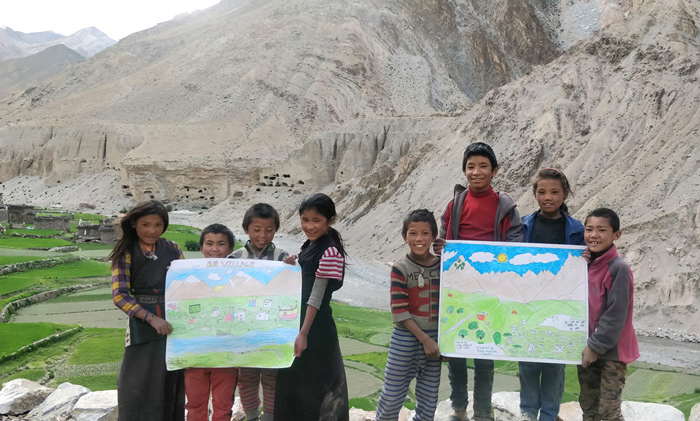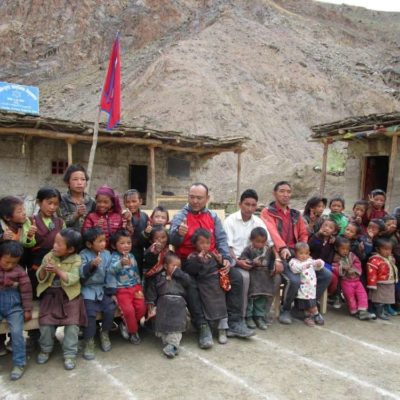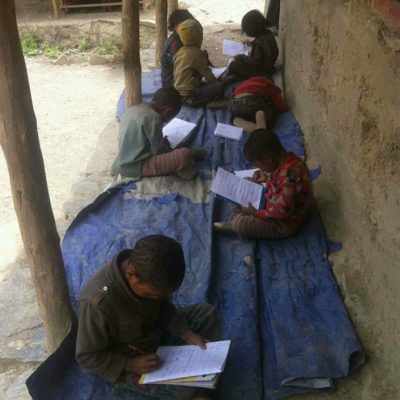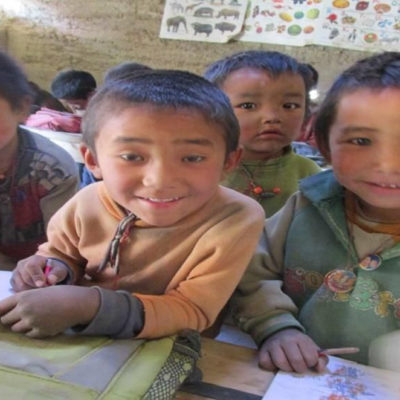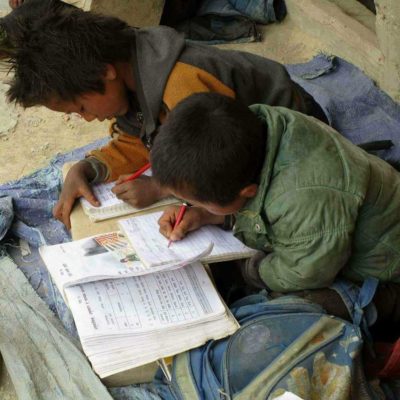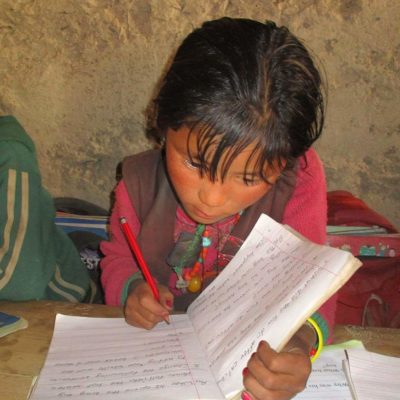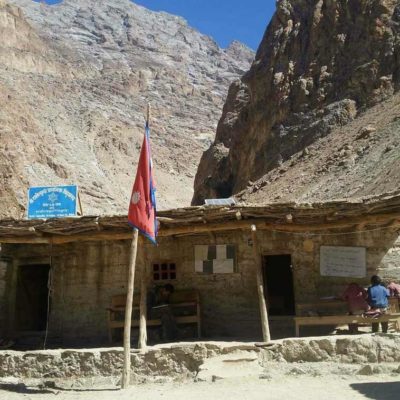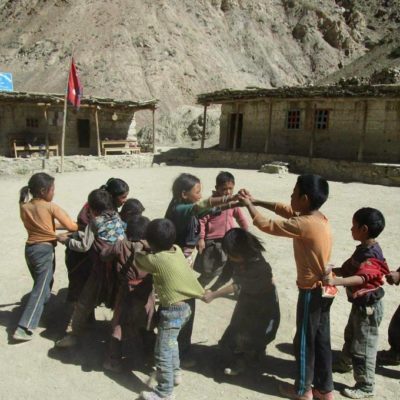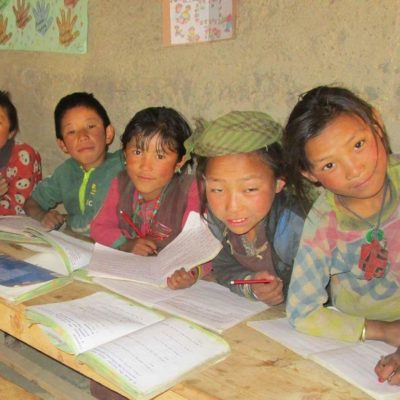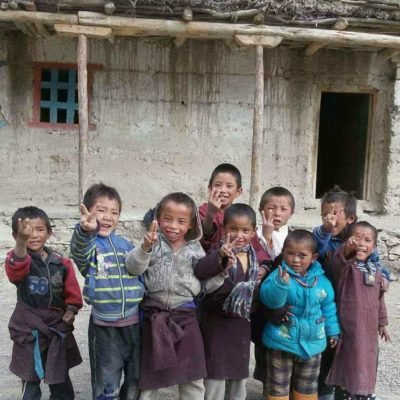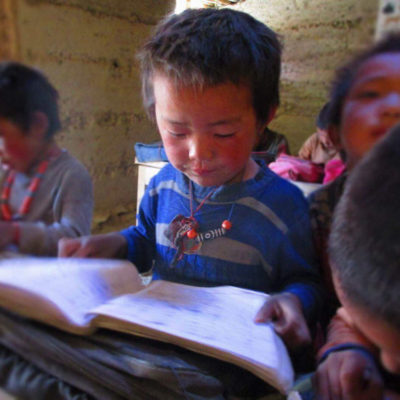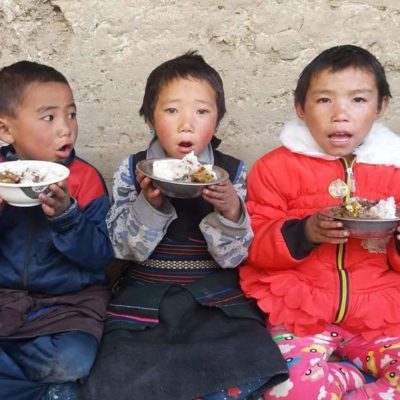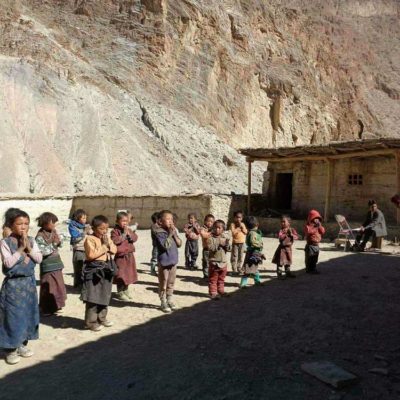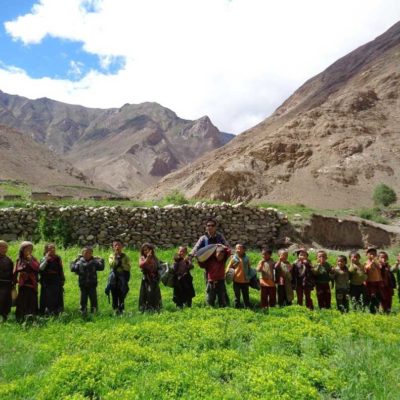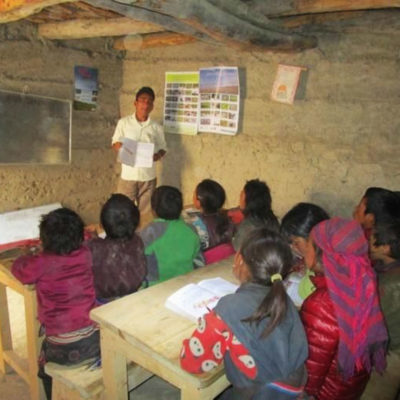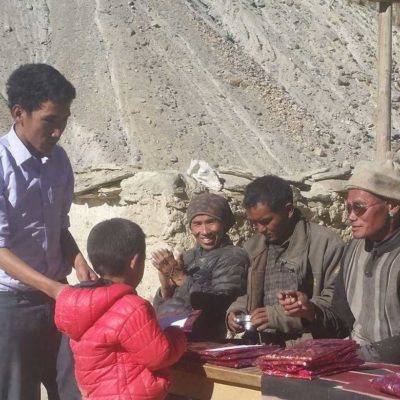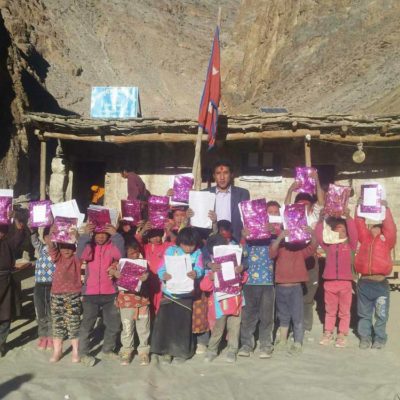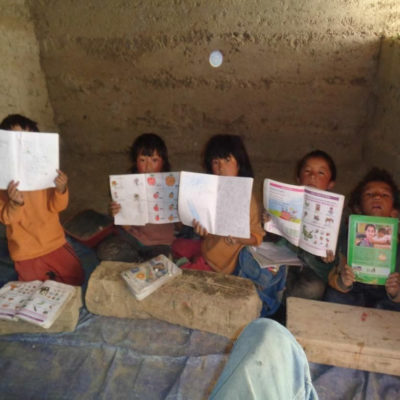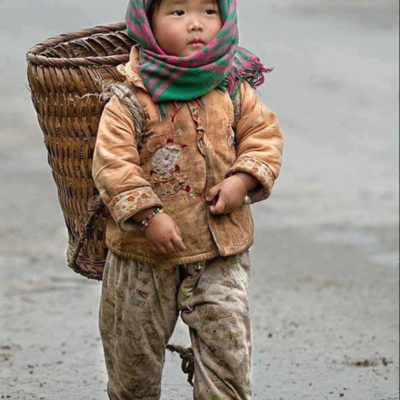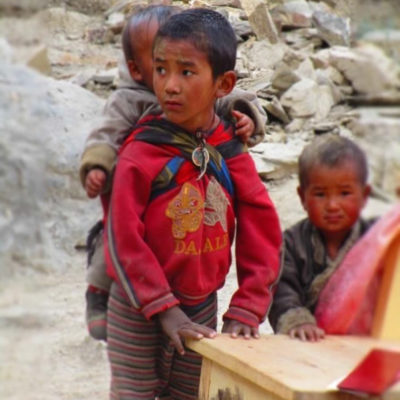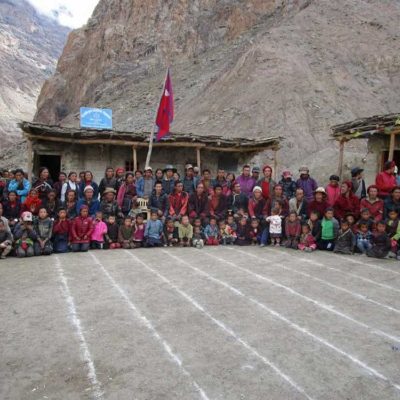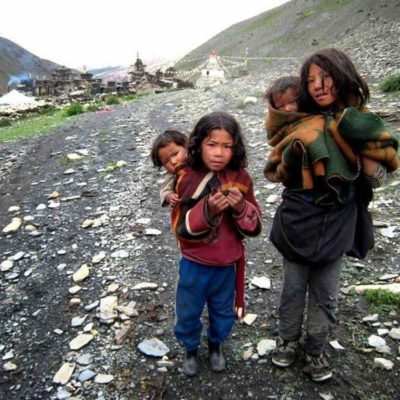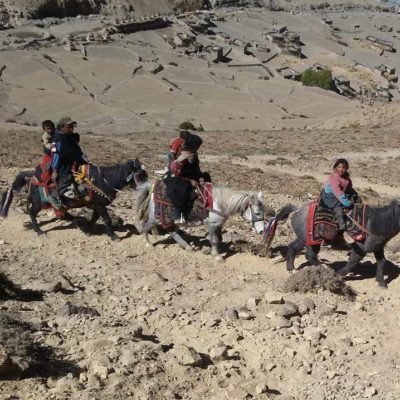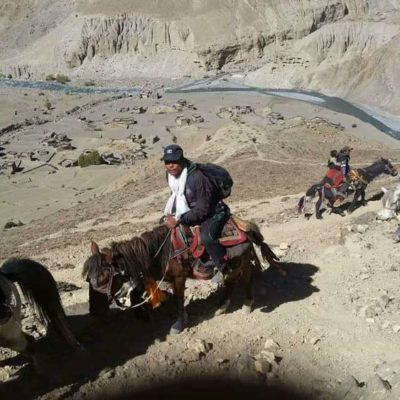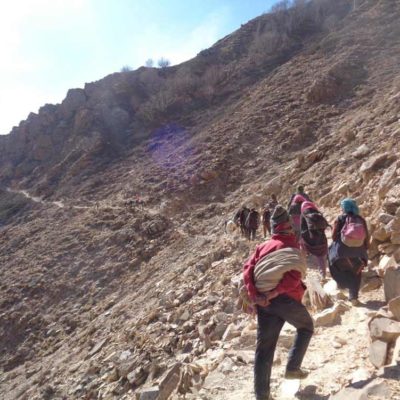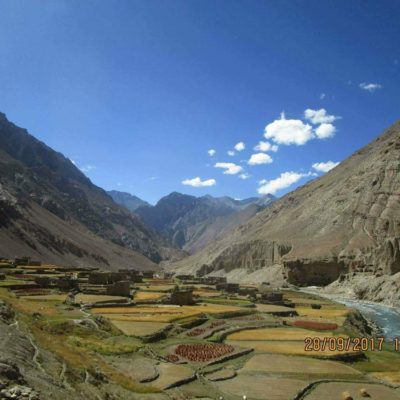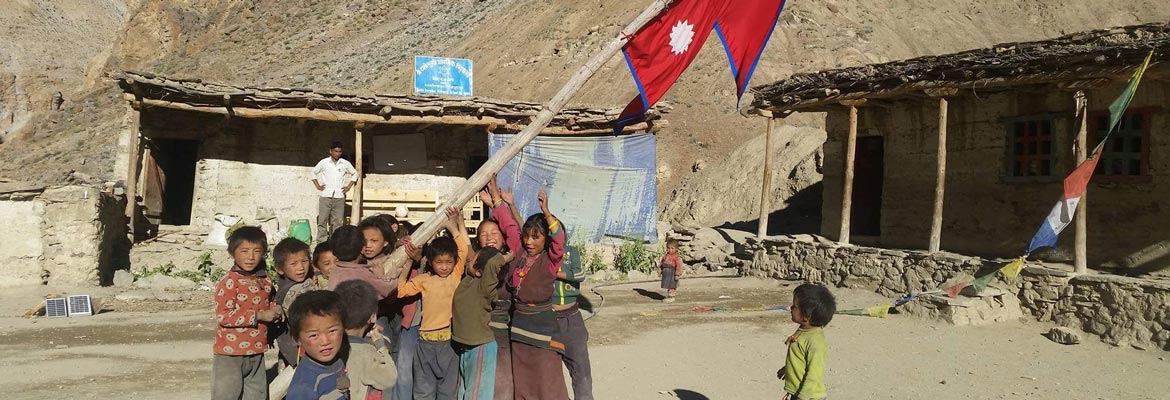
Tashi Sumdho Primary School, Ku
The village of Ku is even more remote than most villages in the Upper Dolpo. It is very near the Tibet border and is rarely visited by westerners. It is a small village of just 45 houses, 170 people. There is no road access. It takes 8 to 10 days to transport the school supplies from Kathmandu to Ku.
We have helped this school for the past three years and will continue to help as needed, but thanks to a charity “Nepal per Te Tashi Delek” founded by Arianna of Switzerland in 2020, along with Michel of Freunde Nepal, this school has full-time sponsors! We are so very happy for Pema Tsering Gurung, the school coordinator, and for everyone in Ku!
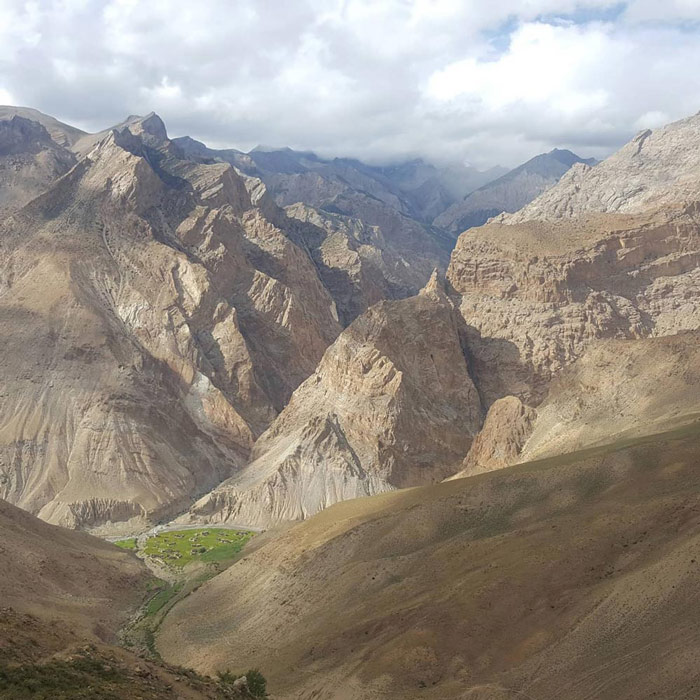
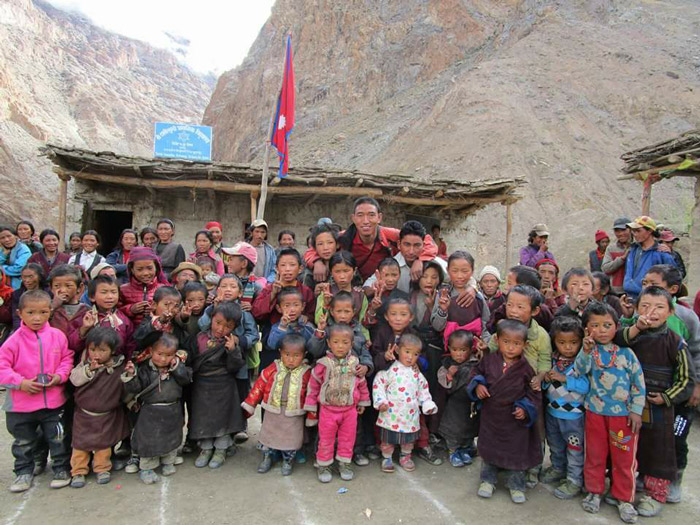
This school was founded in 2007. The villagers were assisted by Dawa Samdup Gurung of Bhijer. Ku villagers had been sending their children to the school in Bhijer, it is a days journey away by horse, over high passes.
In 2011 villagers built the school with no outside support. They wanted to make education possible for even the youngest children by avoiding the difficulties of crossing the high passes.
Pema Tsering Gurung is the current driving force behind the school. He is both the project coordinator and the lead teacher. He is the first person in his village to be educated and he returned to his village to help educate others.
He has made it his mission in life “to take care of the children from Ku and to share their journey into a brighter future”. He founded The Rising Ku “to protect a child`s right to education that not only plays an important role in reducing poverty and child labour but promotes democracy, peace, tolerance, development and economic growth alike.”
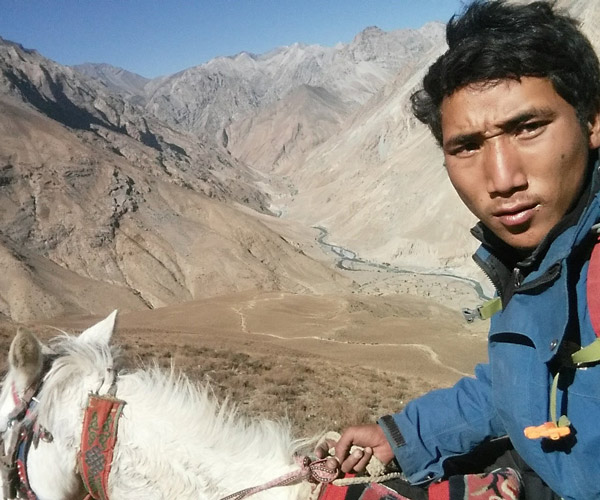
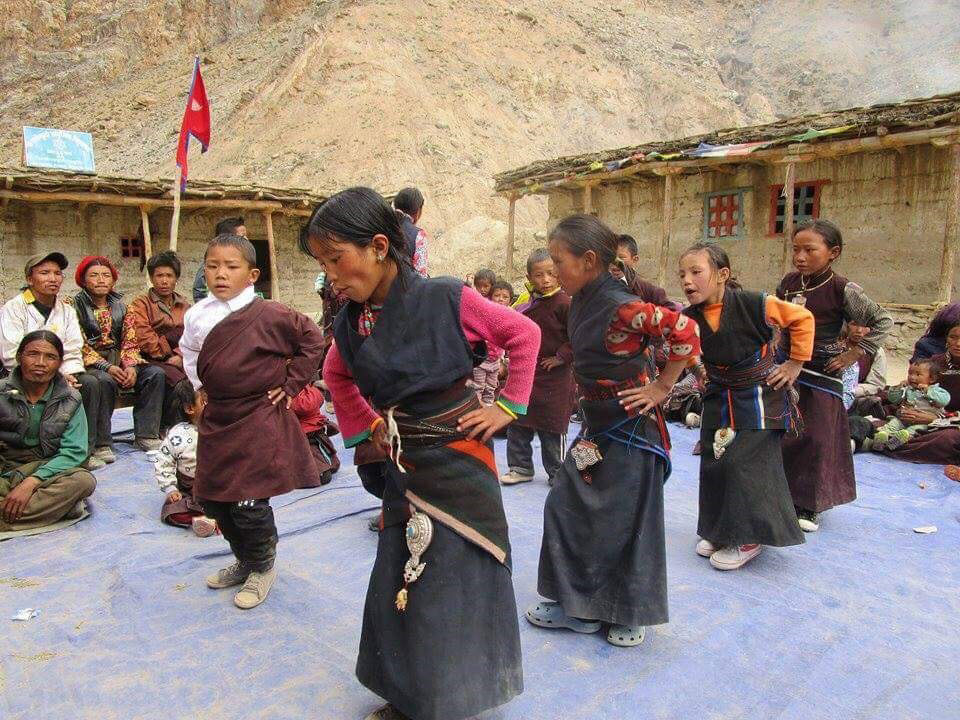
The children are taught the government curriculum, and also their Tibetan language, history and culture. He is committed to helping the children maintain their linguistic and cultural heritage.
The school has about 43 regular students. Most are in pre grade one, 8 are in Grades One/Two and 6 are in Three/Four. The number fluctuates as the kids are often needed at home. All children help with agricultural, herding, household, and childcare chores. Some families only have one child, they are often obliged to leave school to help their family.
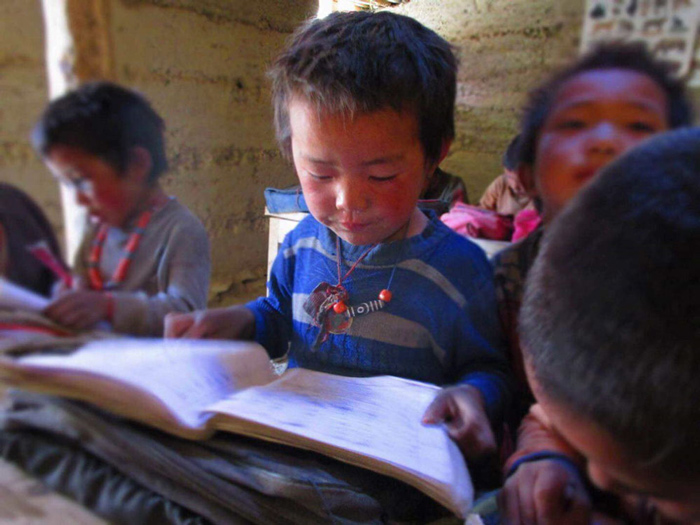
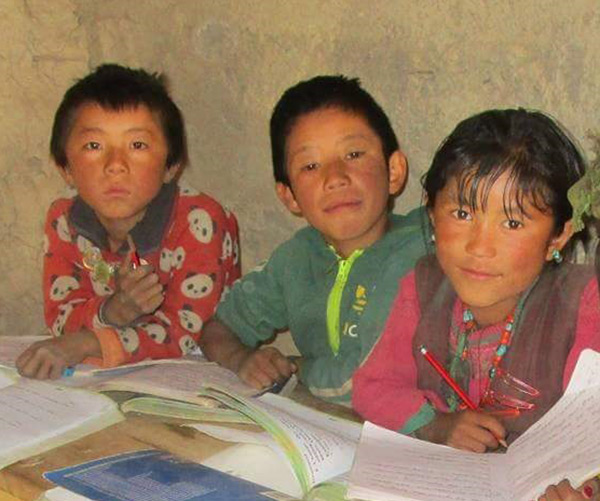
Despite Pema’s tremendous hard work and dedication, only about 55% of potential Ku students attend the school. He is very concerned that not enough value is given to education and that intergenerational transmission of illiteracy is a real risk.
He feels “a big responsibility and hope for my village people as without education the people are ill equipped to live outside the village. Multiple generations will benefit from the education provided by a local school. If children are deprived of an education then both the local and global community is deprived of opportunity and talent.”
The winter lasts 6 months so the school only runs from May to October. It currently teaches to grade 4 then the children must move to Bhijer and the Mukporong Himal Basic School (a boarding school). Pema is working to raise money for a grade five classroom.
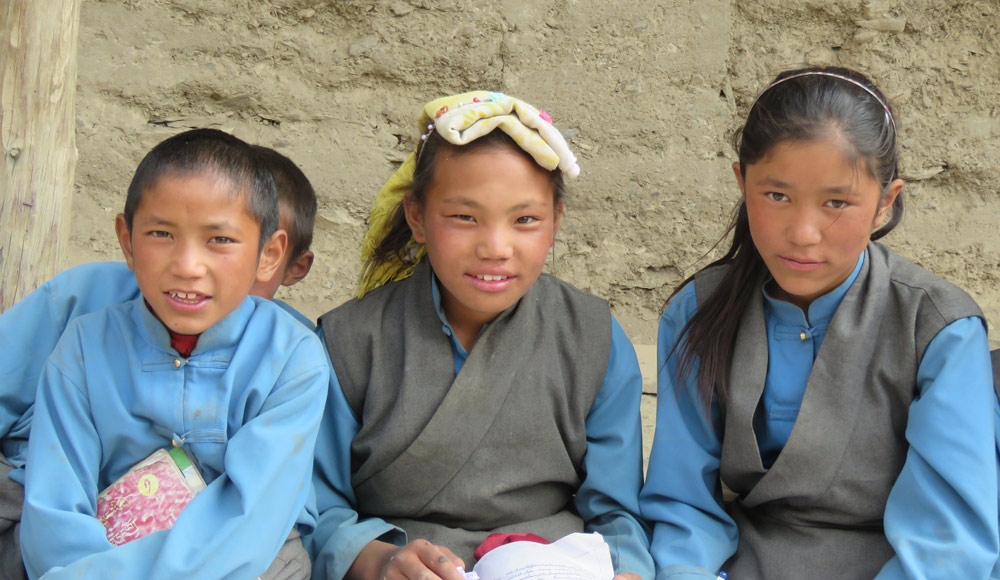
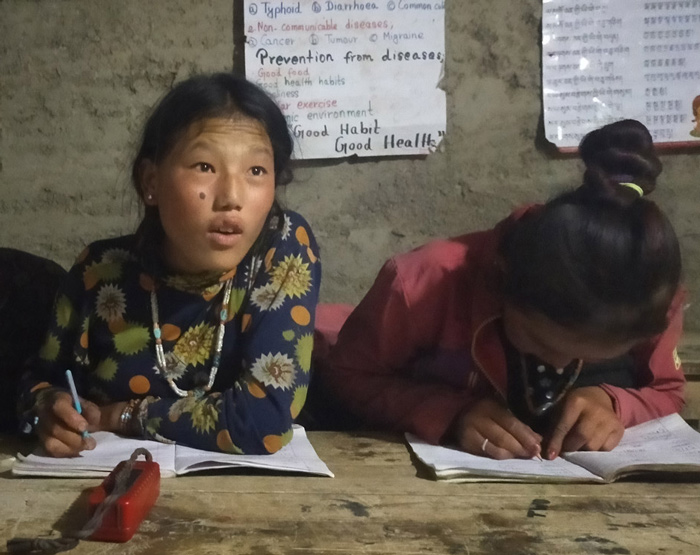
One hour adult classes in basic English, math, writing and reading are given to mature youth and villagers every day but Saturday from June to August.
A Student’s Story
Lodey is 15. He has a younger brother and sister. He is an exceptional writer and artist. He is the brightest student at the school. He is also the oldest. After he graduated from grade 4 here, he went to Bhijer for grade 5 with hopes of continuing his education. Sadly his family could neither afford his school supplies, nor the mandatory firewood contribution to the boarding school in Bhijer. Their main source of income is agriculture and yarsagumba, and they are struggling. They brought him back to Ku so that he could help at home. He convinced them to let him continue studying at the local school. He has poor vision and hearing, but is an excellent soccer player and has dreams of playing nationally.
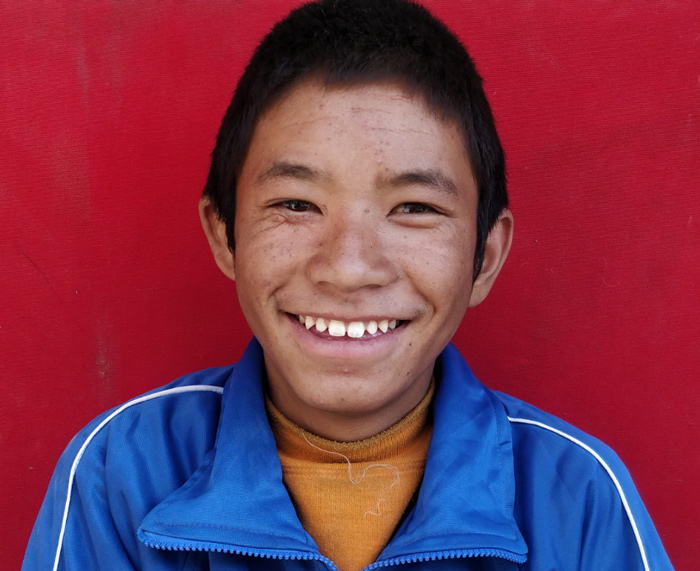
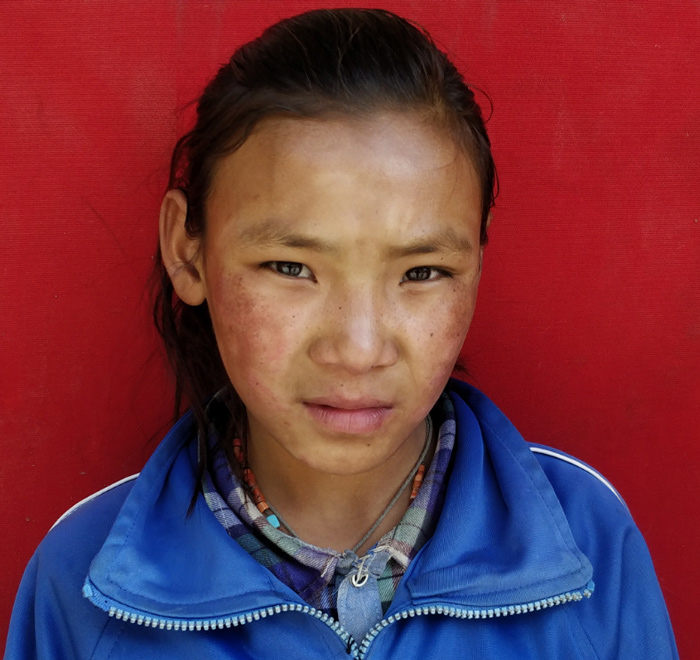
A Student’s Story II
Phurba is 13 years old and is in grade three. She is an extremely bright and curious student who excels in debate competitions, essay competitions and sports. Her dream is to be a nurse and to serve the health needs of her village. She has a younger brother in a monastery in Kathmandu and a much younger sister whose care she is responsible for.
Both students have extensive household and agricultural/herding chores. They also collect yak dung for heating and cooking, and they fetch water from the village tap, a 15 minute walk from the village. They leave school for several weeks in June to help pick yarsagumba. (The school closes for 2 weeks of the yarsagumba season.)
What is Yarsagumba?
Yarsagumba is produced when a type of fungus infects an underground caterpillar of the ghost moth. The mummified caterpillar pokes a few centimetres out of the soil. Children, with their young eyes, are much better at finding it.
It was allegedly discovered by Tibetan nomads in the 6th century, when they noted that their yaks seemed to have higher energy levels after grazing on the fungus.
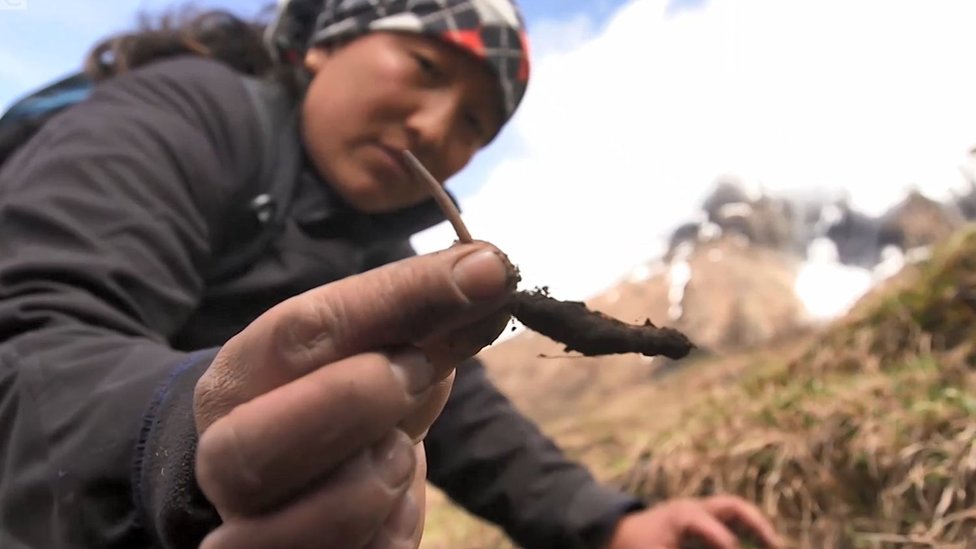
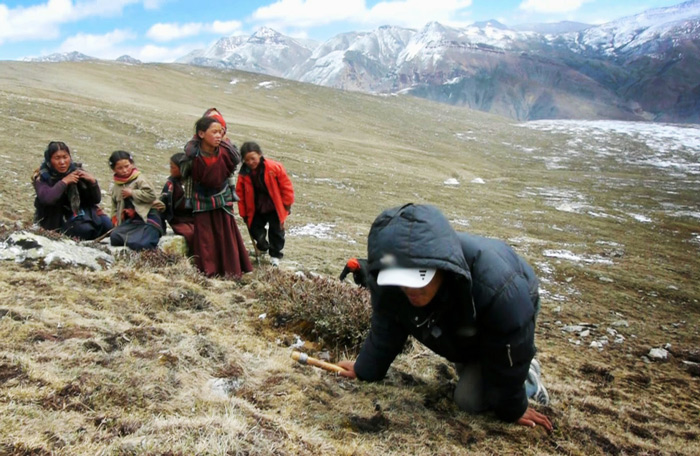
Dolpo villagers have long collected yarsagumbu for their own medicinal purposes and as part of their their trade with their Tibetan partners. Traditionally goods from the Dolpo; yak wool, blankets etc, were traded for rock salt in Tibet. The rock salt was taken to villages at lower elevations and traded for rice and other goods. That changed with China’s intrusion into Tibet. They closed the border for all but a few weeks in summer and yarsagumba harvesting replaced the traditional trading practices as a primary source of income here.
In the late 1990’s Chinese athletes were smashing records and crediting yarsagumbu. Demand in China made the fungus more valuable than gold. Since then, every spring, thousands of outsiders have flooded into the Dolpo for the six week long yarsagumbu season. They strip the fragile alpine hillsides and riverbanks of their slow growing bushes for firewood. They camp by the mountain streams and leave the water undrinkable. They trample the sensitive grasslands just as the new spring grasses are emerging, the grass cannot recover and the yaks struggle to find enough grass to eat in the winter.
With no management or monitoring for sustainable harvest yarsagumbu is in serious decline. And, both the ecosystem and the opportunity for locals to prosper are being destroyed.
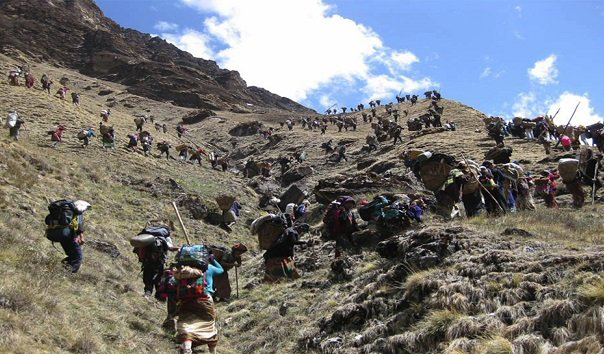
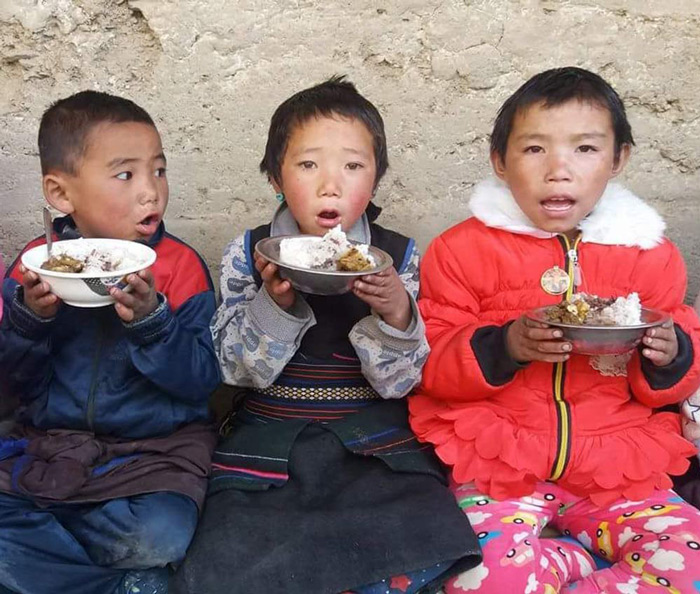
The School Greenhouse
|
|
|
|
The Apple Orchard
The villagers are being encouraged to grow trees. Ku had a few old apple trees and so the villagers decided to plant an apple orchard. They constructed an orchard wall to protect the young trees from browsing livestock, and the students have been tasked with caring for them. Every Friday they divide into groups to water the trees and to clear weeds from the orchard.
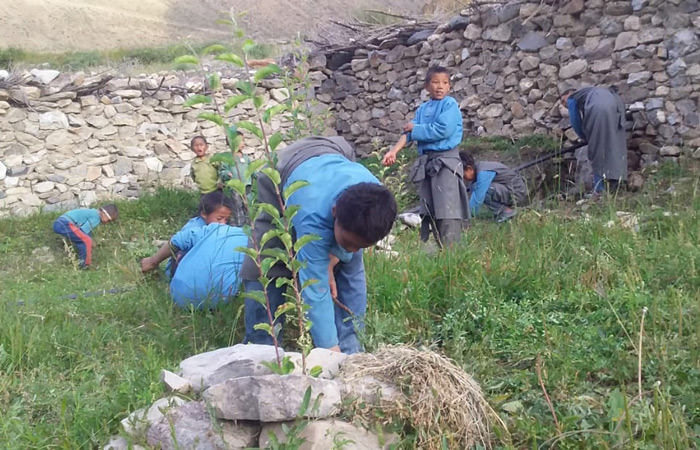
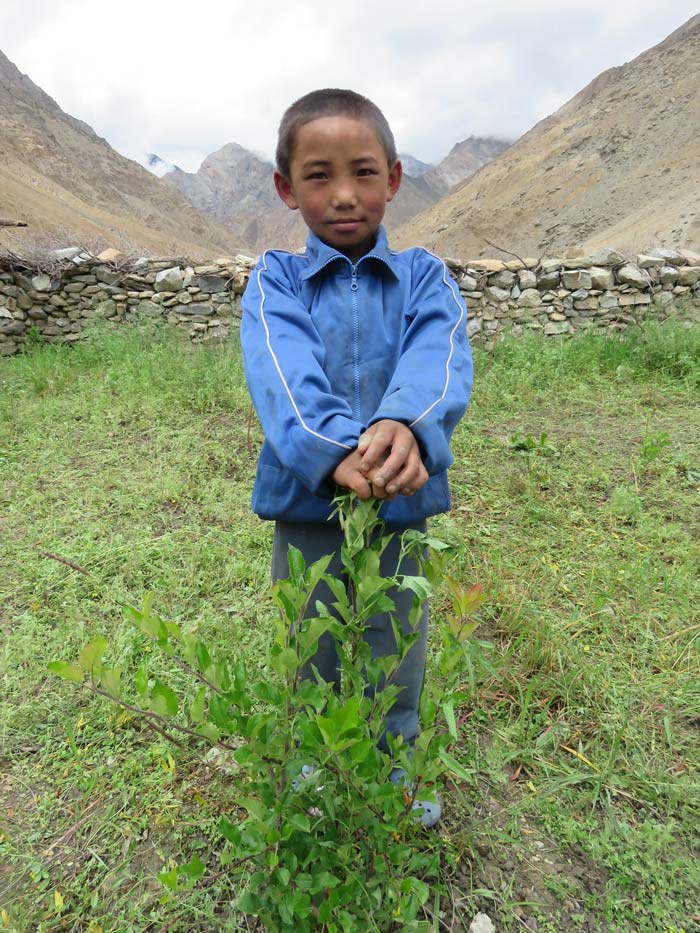
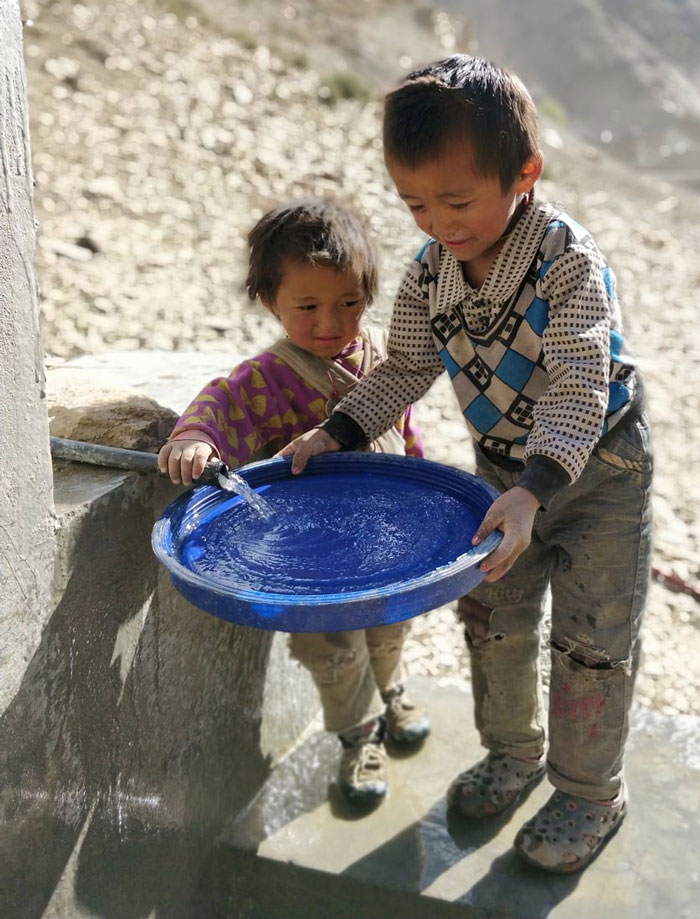
Water
Ku’s drinking water source is a 15 minute walk from the school and the village. Villagers installed a pipe from the river but there is no filter system and people get sick in the summer, especially during the rainy season. We have purchased ENPHO water filter kits for the school. ENPHO (Environment and Public Heath Organization) works with people in impoverished areas; they are experts in providing cost effective, simple technologies for access to safe drinking water, compost toilets and hygiene. Their water filter kits are a smart and simple solution to contaminated water. Clean water makes happy kids!
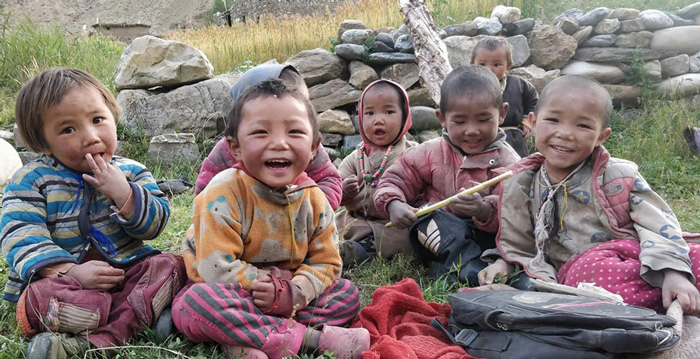
The Classrooms
There are two issues regarding the classrooms:
Heavy rains have seriously damaged the classrooms that they have.
They need more classrooms so that children can complete grade 5 at Ku, and from there go on to Kathmandu. No student should ever again be stuck in grade 4 because their parents cannot afford to send them to Bhejir for grade 5!
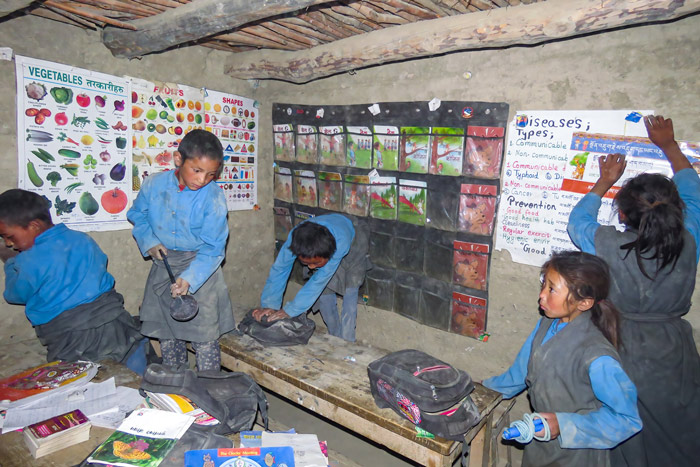
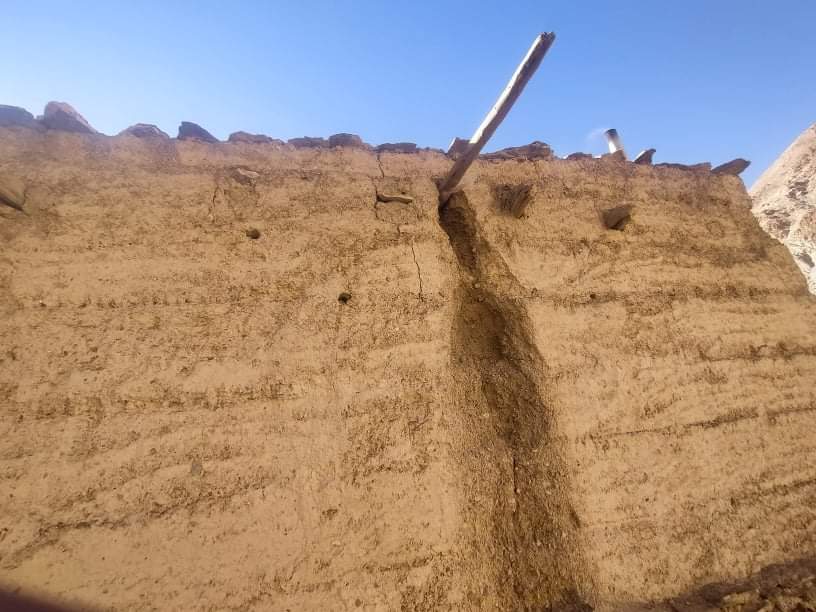
The school currently has four classrooms, two of which are in critical condition. The walls are cracking and are in danger of collapse. Classes have been doubled up in the remaining rooms. Typical roofs are still made with tamped clay on slatted wood, and they do not withstand the heavy summer rains that climate change is bringing to the Dolpo.
They are planning to complete four new classrooms in 2021 with the support of donors and Shey Phoksundo Rural Municipality. The villagers have collected 13 piles of stones for two of the new classrooms. Each pile is 10 feet square and 5 feet high. Collecting and transporting all these stones is a phenomenal task!
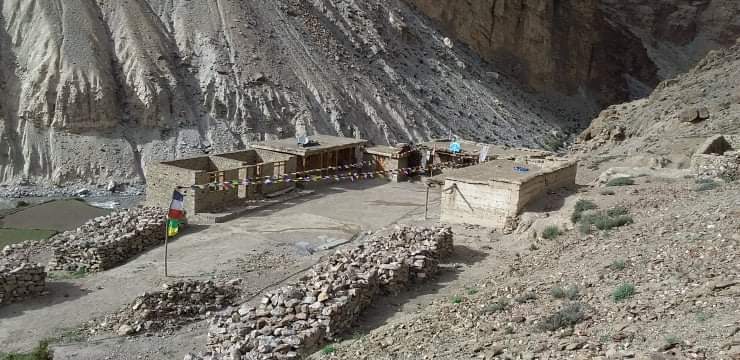
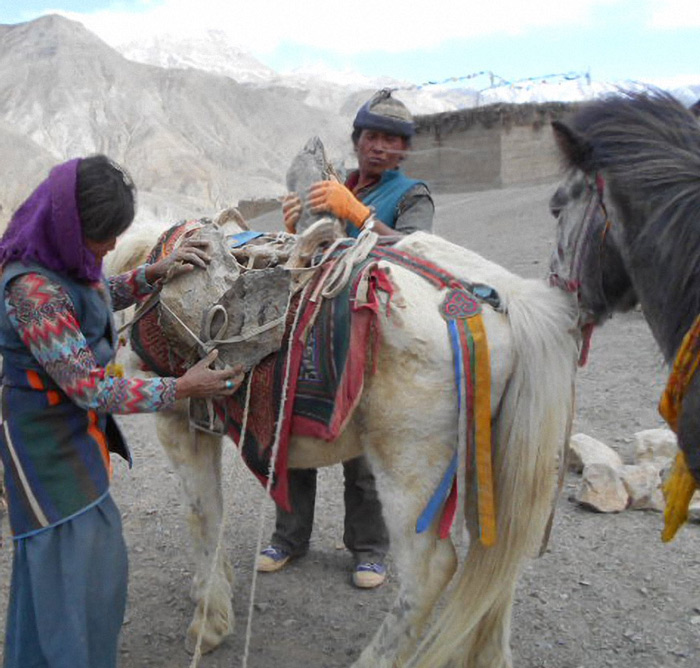
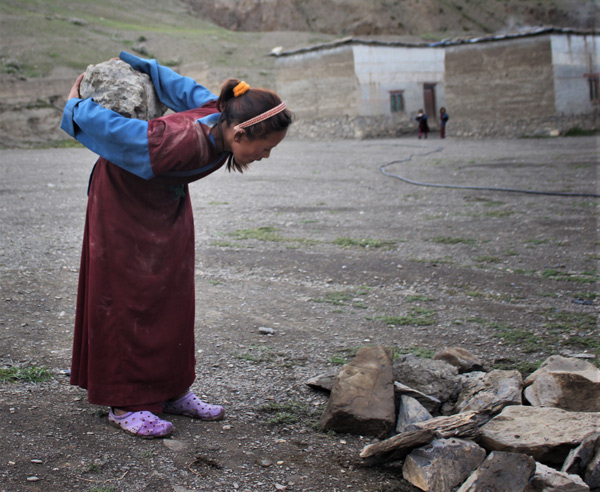
Stones are collected on the hillsides. In these small villages, everybody helps!
The wood for the new classrooms was transported by yak from the Lower Dolpo. This makes it extremely expensive.
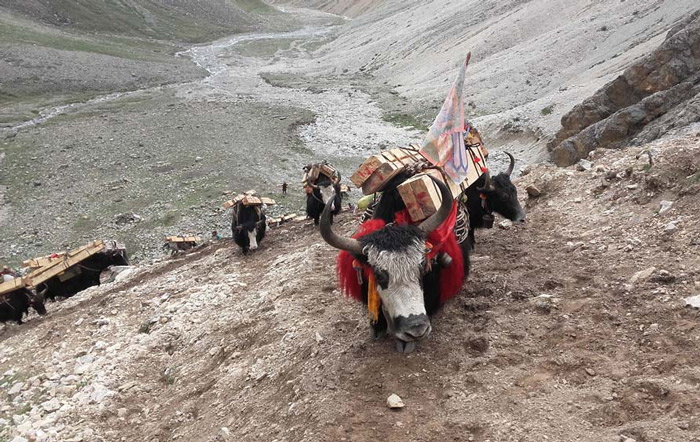
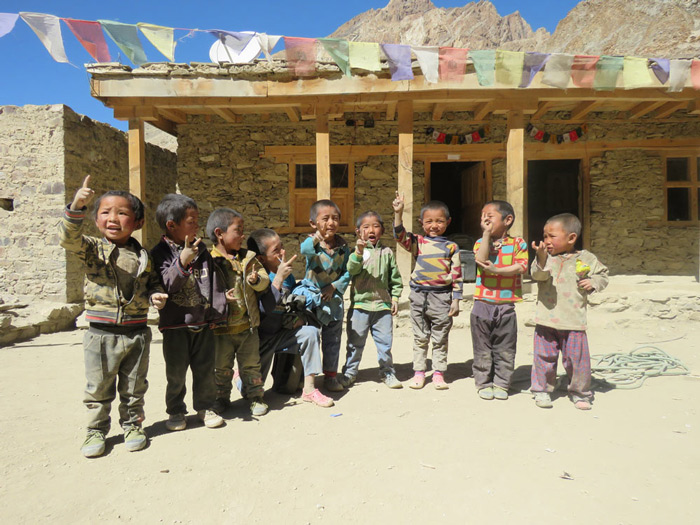
The wood in the new classroom!
Health Clinic at the School
Pema asked us to provide 40 Days For Girls menstrual hygiene kits for the young girls and women of the village. We arranged for Nurse Tashi Bhuti Lama from the medical clinic in Bhijer to distribute them, along with health education. Days For Girls believes that, “Education is the key to creating long-lasting, sustainable change in communities and breaking down many of the barriers girls face.
Tashi Bhuti Lama also brought toothbrushes and toothpaste and taught the villagers about dental care. And she took good care of all those needing medical attention.
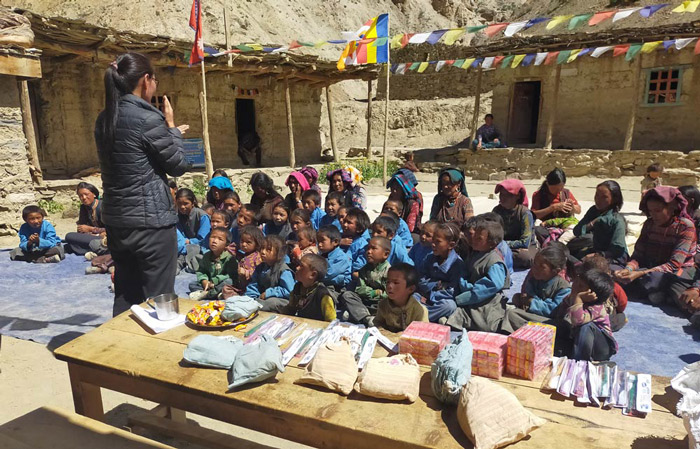
Dashain Festival at the School
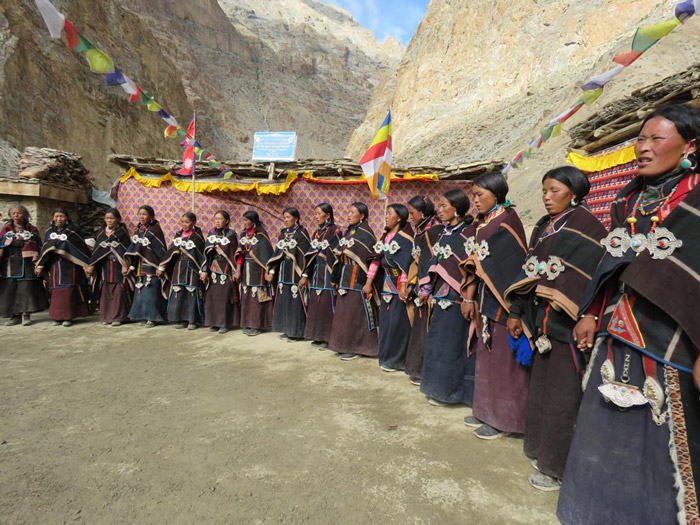
The most celebrated festival in Nepal is Dashain. It is a festival of joy that celebrates a good harvest, and gives thanks for friends and family. The women are dancing in a circle in front of the school, hand in hand, singing traditional songs of blessings for the children and for all of the villagers.
Prayer Ceremony at Ku Monastery
Every fall Ku village holds a prayer ceremony. The highly respected Bonpo lama Sherab and 6 monks came to Ku village from Bhijer to conduct the four day ceremony at the monastery. All of the students and villagers from Ku, along with many guests from other villages come to attend puja to receive blessings for a healthy life.
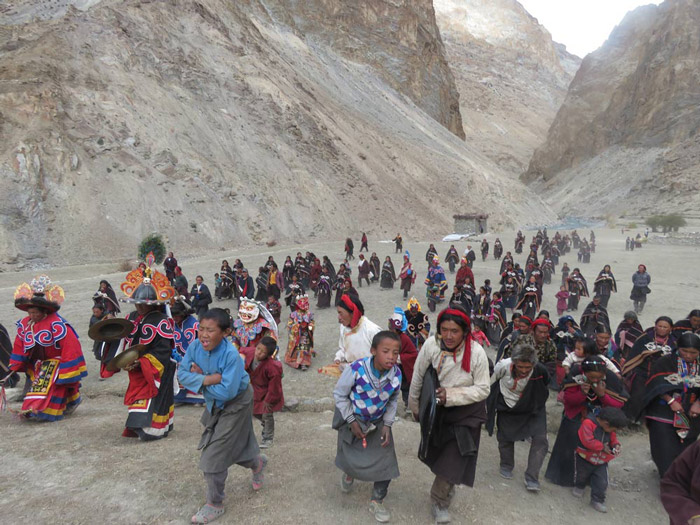
Walking to the monastery
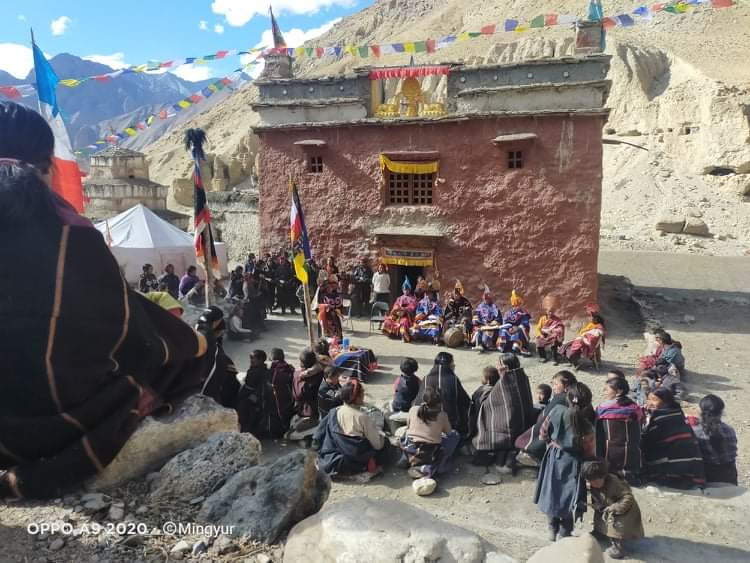
Gathering at the monastery. (An Altitude Project board member helped pay for the delivery of the ornaments on the Gompa. The ornaments are solid brass so are very heavy.)
A New Bridge for Ku
The bridge across the Cholung River took almost 2 years to complete. The government paid for the materials and for the professional builders. The villagers helped transport all the materials from Kathmandu and China using yaks, horses, mules, and their own backs. The long and heavy steel pieces had to be carried on the villager’s backs as they were too long to load on the animals. The bridge has a 10 yak load capacity and the villagers are ecstatic. They no longer have to cross the freezing river in their bare feet, holding on to each other, creating a human bridge. It is always dangerous, and often impossible. We were very saddened to learn that Pema’s mother drowned crossing here.
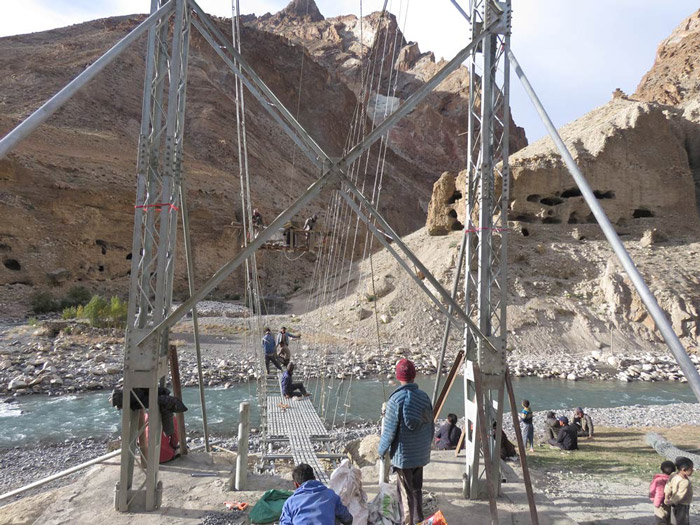
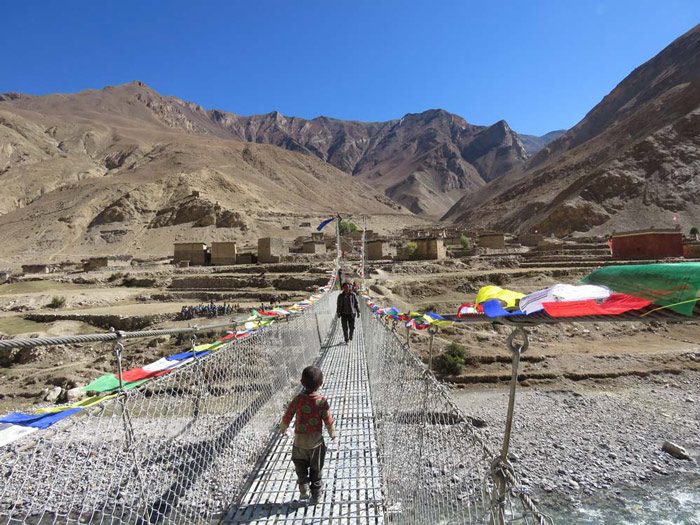
The bridge will open more sources of income for the villagers. They can pick yarsagumba where it grows on the higher elevations on the other side of the river. They used to grow barley on the other side of the river but they stopped because the river was too dangerous, they are looking forward to cultivating their land there again. They can take their animals across safely to graze. The yaks prefer the higher altitude there. In the past precious livestock has drowned. They believe trekkers will come to the holy mountain, Phungchung Hamga (local name) / Dhaphe Shail (official name). At 6,103 metres, it is the highest peak in the Dolpo.
David Gluns, with the help of our great friends at Happy Feet Mountaineers Pvt. Ltd, is planning a trek to the Dolpo and will include the village of Ku on the route!
